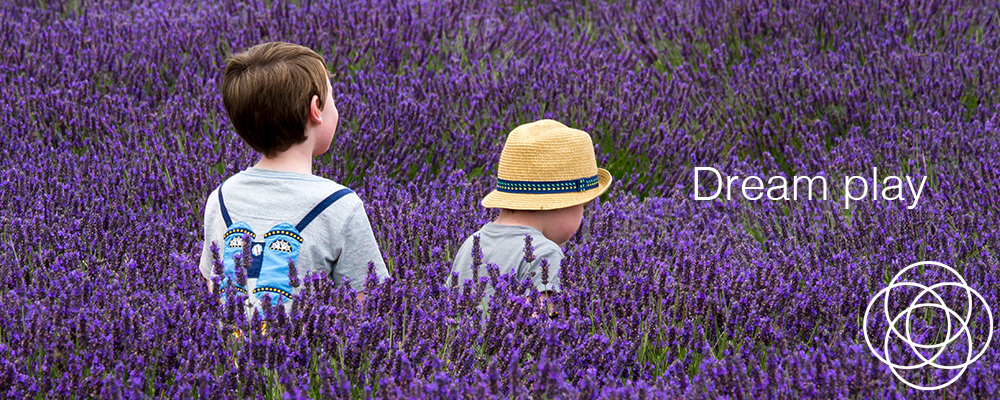You dream of a field of lavender in full bloom, swaying in the wind, beautiful yet overwhelmingly same-same, and perhaps a little too heady: what small change would make this dream more comfortable or inspiring?
There are probably myriad possible answers, but let’s take an obvious one. You could add oases of lush roses to the field of lavender, apricot and fig trees for dappled shade and thirst-quenching fruit, perhaps a crystal clear waterfall, a cascading invitation to splash and play and clear your head of an overload of lavender perfume.
Ok, so that wasn’t such a small change, unless you pare it down to ‘introduce variety’.
Take your turn. What small change would you suggest to make this imaginary dream scene more appealing? Or does the field of total lavender feel just right to you?
Without fully interpreting this dream scene, the dreamer might see the connection to a heady (stuffy) overwhelming same-same kind of feeling or situation in her waking life, particularly in the day or two before the dream. She might either be experiencing this same-same directly in her life, or she might relate to a fear of overwhelming same-same that drives her to madly seek a different-different whirlwind lifestyle, a lifestyle that is heady in a giddy kind of way, exhausting and ultimately unsustainable.
There, in a nutshell, is one of many ways to begin a dream interpretation: identifying the connection with waking life. It’s always exciting to make that first step and experience the ‘aha’ goose bumps confirming that you’re onto something, but the real rewards come as you apply the other steps and go deeply into the dream to uncover your mindset and understand why you’re really feeling this way about life and why you respond in the way that you do. This knowledge about your unconscious mind empowers the potential for change.
But let’s go back to that one small change you would make in this dream, or in a dream of your own.
For this to work really well, stay light-hearted. Don’t over-think the change. Stay with the dream scenario and playfully consider changes.
Only after you’ve decided on the change, or changes, translate them into possible actions you can take in the waking life situation you identified from the dream.
In the example I gave, which came down to ‘introduce variety’, how might you introduce variety into that situation that feels so same-same? Notice that my change wasn’t introducing massive variety that overwhelmed the senses, and it didn’t involve moving into a different field, or ripping up the lavender (though these might be changes you choose). It wasn’t about getting as far away from the lavender as possible in a frenzy of fearful escape. It was a subtle change that made a very big difference.
This isn’t dream alchemy, though it may look similar at first glance.
(There are specific guidelines you need to follow to create dream alchemy that leads to effective and meaningful change in waking life.)
Neither is this dream interpretation, apart from that first step in identifying the parallel waking life situation.
And it’s not about discovering a dream’s message. Dreams do not tell us what to do or offer specific guidance, but once we know how to interpret them they give us the insight about ourselves that we need to make our own good decisions.
Today’s exercise is about playfully shifting the dream picture then translating your changes into options.
Some options will be daft, some will be dangerous, some will be unethical, some will be eye-opening, some will be inspiring, some will feel courageous, some will feel just right, and some will awaken you to your brilliant next step, but what all these have in common is nudging you out of a perhaps limited mindset or perspective and preparing you for positive change. That change may be prompted by one of your options, or it may just flow naturally, a result of your shifted vision and the wonderful insights that pop up for us when we play.
You might also enjoy

